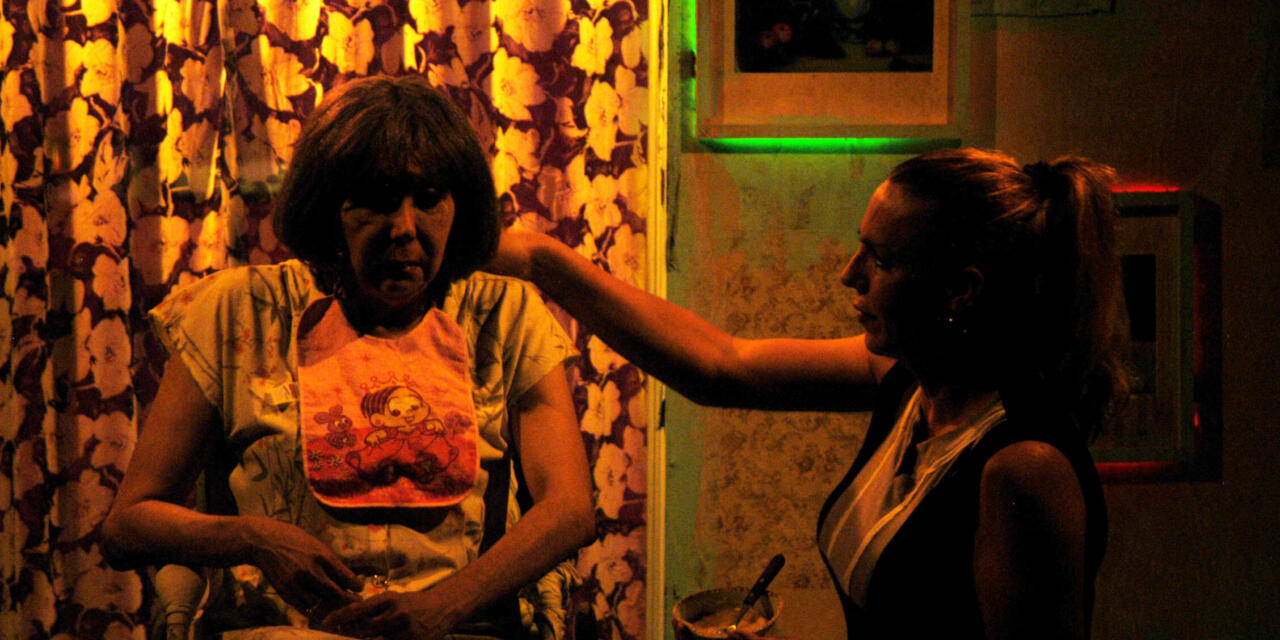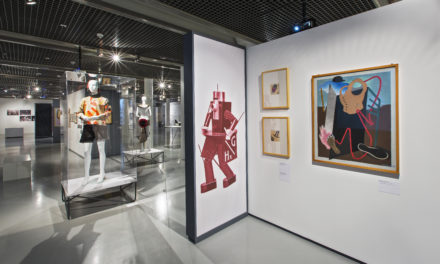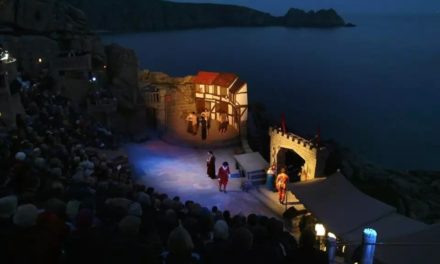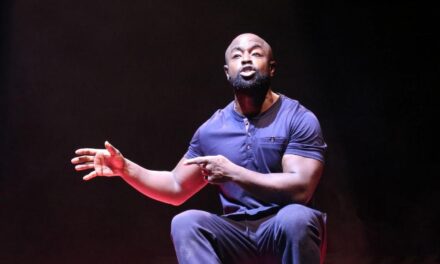Praça Roosevelt (Roosevelt Square) is a square located in downtown São Paulo. It was a historic place for culture and resistance against the military dictatorship (1964 – 1984) but after that, it became one of the most dangerous places in the largest metropolis of the southern hemisphere ruled by prostitution and drug trafficking. In 2000, the theatre company Os Satyros, founded by Ivam Cabral and myself, arrived at the square and contributed to its radical urban revolution. Nowadays it is a powerful cultural point that offers a rich nightlife, with theater venues, bars, and cinema within 200 meters along a sidewalk.
Initially, the theatre company had to live daily with the universe of criminality and prostitution in the square in risky and challenging conditions. In a decolonial approach; we chose dialogue and integration into the local community. It led to the first internal revolution in the company´s theatre process. The impact of this experience affected the company´s aesthetics since then.
From that moment on, we assimilated a fundamental quality in our work: serendipity. In the context of the company´s work, it can be defined as the artist’s quality of observing and interacting with the environment (micro or macro) in which they are embedded, recognizing its confrontations and opportunities, and creating their aesthetics and themes based on that. It is based on the observation and connection to social reality and its confrontations.
Serendipity was taken by the company on a micro-level, which led them to create a series of documentary plays about Praça Roosevelt (from 2003 to 2009). The physical copresence between our ensemble and the local community was seminal for these works. We shared our space with them daily. We were not judgemental about their way of living. They trusted us and gave us the opportunity to know from very close their reality and understand the confrontations with all the prejudice they face every day. On a macro-level, we investigated the impact of the Information Age on our lives. From 2009 on, the company began an investigation into the concept of cyborg theatre. How is technology affecting our daily lives? – this was the question asked to our ensemble. We were then compelled to re-dimension the role of technology in our own theatre projects, using cell phones, the internet, robots, and apps on stage.
The most important aspects of the Information Age are: the process of technological singularity, the rise of information capitalism, and the global culture wars. Technological singularity is the potential process of an uncontrollable science and technology growth. It refers to all areas of knowledge, from bioengineering to computer systems, from war weapons to pharmaceutical research. Information capitalism refers to the economic logic of post-industrialism. This process is based on the increased importance of enterprises controlling and using the information of their users as the ground for their profits. Global culture wars are the consequence of the globalization process with the inevitable conflicts due to cultural differences among peoples, identitarian groups, religions, and nations. Not only did Os Satyros incorporate these themes into their projects, they also assumed the technological devices available to ordinary consumers on stage.
Ever since, Os Satyros stopped assuming the theatrical phenomenon as the one restricted to the presence of the physical bodies of actors and audience in the same physical space, the famous ¨here and now¨. The physical copresence used in the previous period was not over, but it added a new dimension: the different forms of technopresence. Praça Roosevelt was our physical home, but the theatrical presence on stage got much broader and more complex. During the physical performances in our small venue, we went beyond the physical presence of actors and the audience. Exploring cyborg theatre, we used the available technological extensions to enlarge the human presence possibilities on stage. We opened up to the technopresence of other persons on stage interacting with the cast, people who would be in phone calls, in social media, web sites, and robot operators were effective performers in our cyborg plays.
Besides that, Os Satyros began to address themes related to the impact of these new technological advances in contemporary societies, in which physical bodies are performatively attached to their technological extensions (what we call cyborg condition). How are we actually living our spirituality, love, sex, politics, and other dimensions of social life in this new world? One of the main questions we had from this period was not about the nature of the new technology, but the new dimensions of human agency in the world. Who are we, humans, in the cyborg dimension? What can we be and do? The Polish thinker Zygmunt Bauman was an important reference for us in that period.
Therefore, Praça Roosevelt was no longer seen as a singular geographic point, but as a spot of digital interconnectivity with the world. Our theatre performances became understood not only as what happened in a determined space/time (Praça Roosevelt/now), but as a phenomenon that can be porous and dialogue with other spaces/times (digital spaces/digital nows).
The new forms of scenic presence and the eventual cyborg performers were fundamental for our performative turn, especially after Hypotheses for Love and Truth (2009). In this mise-en-scène, for example, several scenes allowed dialogues between actors and external performers who were on social media or cell phones. The audience was also invited to turn their cell phones on during the performance and the actors interacted with them on the phone in specific scenes, sending messages or even calling them.
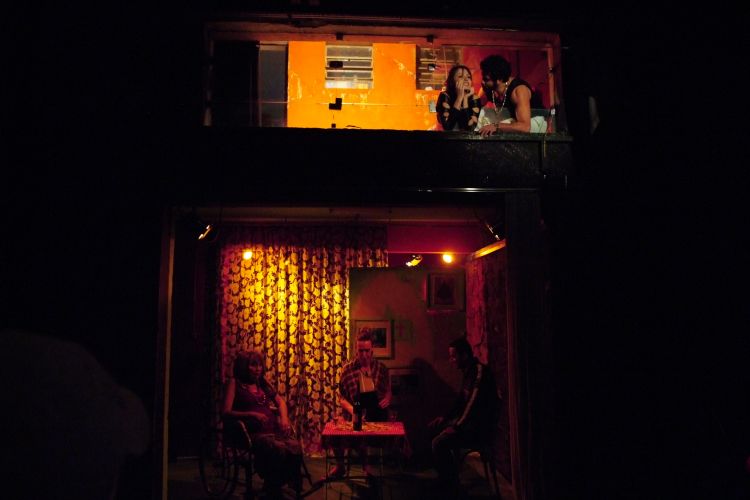
A Satyros play Hypothesis for Love and Truth. Hipóteses 1 to 5. Photographs by Andre Stefano.
Around 2014, based on the taxonomy of presence described by Shanyang Zhao, we observed the different forms of technopresence we had been using during those years and their potentialities for our performances. We studied forms of technopresence and used them in a series of 7 productions called ¨And the cyborg humanity was created in 7 days¨. In these shows, we used telepresence and virtual presence and their derivations on stage. Internet, cell phones and their apps, robots, drones, and programmed answering devices (like Alexia). All those low-cost devices were used in our performances. The creative potential for those technological devices is endless and extremely exciting for the troupe.
The experience of cyborg theatre had somehow prepared us for the unexpected tragedy of Covid-19. In March 2020, Sao Paulo’s government declared the first lockdown due to the pandemic. Theatre, dance, cinema, music, and all other cultural events had to be suspended indefinitely. The number of cases and deaths related to Covid increased rapidly and the future was unclear. Our company members were afraid of what it meant to humanity and the risk of the art of theatre. Moreover, Ivam Cabral and I were also founders and part of the team of the leading pedagogues of SP Escola de Teatro. The school is also located in Roosevelt Square and counts 400 regular students and 1600 eventual students for workshops. It implied the responsibility of the continuity of the education of over 2 thousand people. How could we face this critical situation?
The previous research in cyborg theatre had given us numerous technological tools and possibilities as well as new concepts of presence. They could guide us into the lockdown and we might think we were ready to face the tragic moment. However, the pandemic displayed extreme and unprecedented circumstances, far worse than we could have ever wondered. It demanded an original and radical response.
In the same week that the government of São Paulo determined the lockdown, we decided to perform and run the monologue ¨All the dreams of the world¨, performed by Ivam Cabral on Instagram. I was the director of the performance. This play was running physically at Praça Roosevelt had to be canceled due to the lockdown and we decided to keep it running in a new digital media. We opened the camera on Instagram for a theatre digital play for the first time on the 21st of March, 2020. We performed and transmitted live digitally for new audiences every Friday, Saturday, and Sunday until the end of May 2020. It was a political statement, a digital resistance act.
In the following week, a manager of Sympla (the biggest ticket sales website in Brazil) saw the performance, got excited about the experience, and challenged us. He offered us a Zoom room to investigate the possibilities of a theatre performance in it. At that moment, we knew absolutely nothing about Zoom and its tools but we took it over. Our first meeting on Zoom happened at the beginning of April 2020. It was emotional as we had no idea of what the pandemic could mean for our lives. But it was also cheerful. We were together for the first time in two weeks and we had the hope to recover our craft digitally as a collective.
The first rehearsals were emotional, awkward, and quite funny. Some actors didn´t know how to access the link, or even how to operate their cameras and microphones. We were extremely affected by the violence of the pandemic and had the fear of our technological limitations, but being able to be together on a screen was surprisingly empowering. We had seen some recorded theatre performances but we didn´t want to go in that direction. A pre-recorded performance was not a live experience. If theatre is the art of the copresence of humans, they did not attend to this quality. We called spectral presence the one in which the actor is not present but only as an image, as in a movie, for example. We wanted to share an experience of telecopresence and Zoom and its many tools could help us perform as we wished. We wanted to offer the audiences a live theatrical experience on a digital medium. Liveness and copresence were fundamental to us in the search for a Zoom theatre. We already knew many things about technopresence from our previous experiences and this was our goal: to create a digital theatre performance played in telecopresence, in which actors and audience would be present for each other simultaneously on a screen. It was clear for us that Instagram would be less powerful than zoom in this respect as it doesn´t allow the telecopresence of all participants in the event.
Using the most basic method of trial and error, we discovered technological tools and created a digital theatre world on Zoom by ourselves. We devised a stage (using the zoom configurations ¨hide non-video participants¨ and ¨gallery view¨), a backstage (creating a Whatsapp group for the ensemble), sound effects and soundtracks (using ¨share sound¨ tool), other effects such as makeup and video projections (applying zoom tools and other apps), etc. We also observed each actor, isolated in their own house or bedroom, should be responsible for their light design, costume design, and set design. Even if we had a visual designer, it was necessary that each member of the ensemble took responsibility for lights, set, and costumes, following our art director’s guidelines. It was an amazing adventure in the discovery of techno possibilities for digital theatre.
During the rehearsals, we wrote about the process on our social media. Some artists and friends got curious about it and a Swedish actress and friend, Ulrika Malmgren, proposed to take part in the performance. What could seem impossible for traditional theatre was absolutely feasible for digital theatre. Being the director of the play, I would be as close to her as to any other actor on the screen. She became a member of the cast. We had actors in São Paulo and Stockholm rehearsing together.
Finally, in June 2020, we had the premiere of the show The Art of Facing Fear. We invited journalists and critics to come and see our first digital play. It was a digital performance, with text, acting, set design, costumes, lights, sound effects, and everything played live. In our release, we mentioned the concepts of telecopresence and digital theatre so that newspapers and other media vehicles could understand the groundbreaking project and write about it. The reactions after the premiere were highly controversial. Some artists, newspapers, and critics were very enthusiastic about the possibilities of digital theatre. Others ignored what we were doing. Some critics attacked us. They said our effort was not art at all. in fact, they accused us of betraying the real theatre.
Despite all odds, the play was successful. After the performances, we invited the audience to continue in the zoom room with us for a short talk with the ensemble. It was a fantastic experience in which we could exchange impressions and share our feelings about the performance.
At the same time that we were learning those skills, we offered them to our students in SP Escola de Teatro. They had the opportunity to learn skills to make theatre in digital ambiance on Zoom. The school was kept alive and active for the thousands of students using digital theatre during the two long years of the pandemic. We proposed the same strategy to the MT Escola de Teatro, a sister-school in Cuiabá, the state of Mato Grosso.
After the premiere, The Art of Facing Fear was adapted and produced by partners in Africa, Europe, North America, and Asia, summing up 4 different productions with actors from 27 different countries. In all of them, the actors performed live for audiences from all over the planet. In the period of 2 years, we have produced other 12 digital plays, totalizing more than 500 performances and over 50.000 spectators. All this huge effort happened on the screens of computers. This was the way we found to resist and keep our art alive. All these accomplishments don´t overlook the seminal role of traditional theatre. More than ever, physical copresence in theatre is necessary for our times of virtuality. However, digital theatre can be seen as a new theatrical form with its own characteristics.
The technological revolution is not yet at its peak. Its potentialities are endless. Each day, we get to know about a new device, another scientific discovery or a revolutionary machine. Theatre will inevitably take part in this process, as it has ever done. It has been incorporating technology throughout its history, since the Egyptians and the Greeks. Why would we ignore it now? Digital theatre is just one step in this long historical process. Twenty years from now, for example, holography will be available for the masses. Will holographic theatre be possible? Other questions will also demand wise replies from theatre makers. How are we going to make theatre from now on? How will theatre be taught in institutions for the next generations? Theatre will not die. It is essential to the human experience. It will assume groundbreaking shapes and achieve new audiences. It is up to us to be conscious that creativity and technology should be working together for the future of our art.
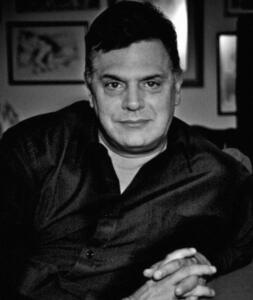
The director Rodolfo García Vázquez. Photograph by Andre Stefano
This text was written with the support of Between.Pomiędzy Research Group.
This post was written by the author in their personal capacity.The opinions expressed in this article are the author’s own and do not reflect the view of The Theatre Times, their staff or collaborators.
This post was written by Rodolfo García Vázquez.
The views expressed here belong to the author and do not necessarily reflect our views and opinions.

